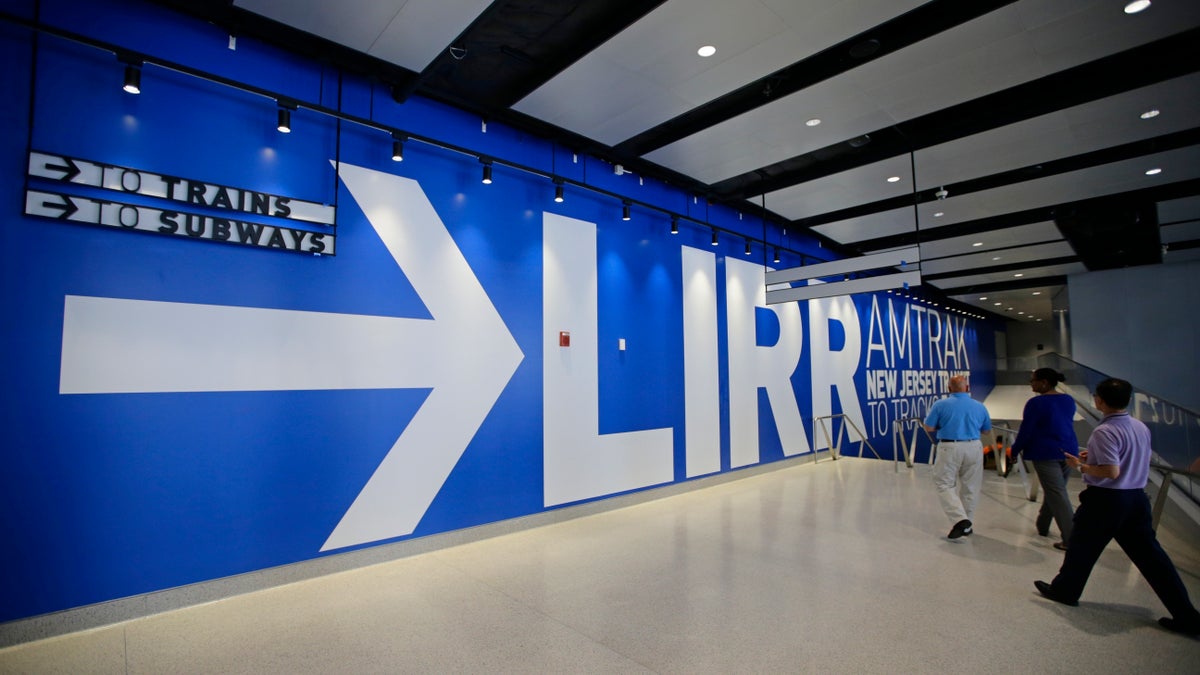A funding agreement was reached for the multibillion-dollar redevelopment of New York’s aging Penn Station, the country's busiest rail hub.
Gov. Kathy Hochul and Mayor Eric Adams announced details of the deal Monday.
The plan would create new commercial and residential buildings around the station, with those building's developers getting to make payments in lieu of taxes for a period of 40 to 45 years. The amount collected in excess of existing property taxes would be applied to the project.
That money would contribute more than $1 billion to pay for improvements to streets, sidewalks and other public spaces, as well as 50% of the improvements to transit infrastructure including underground concourses and subway entrances.
AOC’S ‘NO’ VOTE ON INFRASTRUCTURE BILL IS SLAMMED IN NEW YORK: REPORT
"This agreement brings us one step closer to a beautiful, modern station worthy of New York with vibrant open space, lively streetscapes, and better, more seamless connections to local transit," Hochul said in a statement.

A funding agreement has been reached for the multibillion-dollar redevelopment of New York’s aging Penn Station, the country's busiest rail hub. (AP Photo/Frank Franklin II, File)
The reconstruction of the station and the first phase of the improvements to public spaces is expected to cost roughly $8 billion. Hochul’s vision is a scaled-down version of earlier plans announced by her predecessor, fellow Democrat Andrew Cuomo.
NYC MAYOR ADAMS WANTS MORE FEDERAL CASH EVEN AFTER MASSIVE INFRASTRUCTURE BILL
A recent study commissioned by Reinvent Albany, a state government watchdog group, estimated that the payments in lieu of taxes would amount to about $4 billion, a number that assumed a southern expansion of the station to accommodate more tracks when a new Hudson River tunnel is built several years from now. That expansion, which is in initial discussions, is projected to cost an additional $13 billion.
The plan has provoked criticism from neighborhood groups who contend it will destroy a vibrant area and displace residents and businesses.
Samuel Turvey, chairperson of RethinkNYC, a transportation and land use advocacy group, said the plan is misguided because it fails to turn Penn Station into a through-running facility where trains would pass through to other areas of the city, rather than turning around and returning to their origin or sitting in rail yards.
Turvey called the plan "a very ugly replacement theory where local residents, small businesses and historic structures are being cast to the winds with the help of the state and city."
The state has committed $1.3 billion for the initial reconstruction of the station. The rest of the cost is expected to be filled by federal dollars and contributions from New York, New Jersey and other public sources.
The funding agreement still needs final approval from the state’s Public Authorities Control Board, which oversees project-related financing for the state’s public authorities.
The plan calls for a large, single-level train hall with higher ceilings and a 450-foot-long skylight to replace the current cramped, windowless interior; more escalators, stairs and elevators to platforms, and more street entrances to reduce sidewalk crowding.
While the expansion of the station to add tracks is years away, the memorandum of agreement released Monday sounded a potentially ominous note: A study is underway to determine whether two additional tunnels would need to be built to connect the Hudson River tunnels to an expanded Penn Station, it said.





















